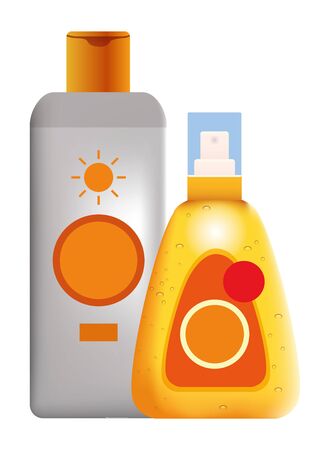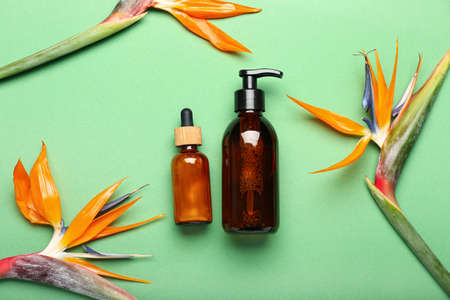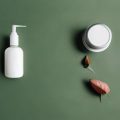Introduction to Eco-Friendly Packaging in UK Beauty
The beauty industry in the UK is experiencing a gentle yet profound shift towards sustainability, with eco-friendly packaging taking centre stage. As British consumers become increasingly mindful of their environmental impact, there is a growing demand for beauty products that not only care for the skin but also respect the planet. Eco-friendly packaging refers to materials and practices that reduce waste, minimise carbon footprints, and encourage recycling or reuse—all while preserving the integrity and luxury feel of beloved skincare and cosmetic items. This movement resonates strongly with the UK’s culture of environmental stewardship, where both brands and customers are striving to make more informed, responsible choices. The table below highlights key aspects of eco-friendly packaging and their relevance to today’s conscious British consumer.
| Eco-Friendly Packaging Feature | Benefits for UK Consumers |
|---|---|
| Recyclable Materials | Reduces landfill waste and supports local recycling initiatives |
| Biodegradable Components | Lowers long-term environmental impact |
| Refillable Designs | Encourages repeat use, saving money and resources |
| Sustainable Sourcing | Supports ethical practices and British suppliers |
With this heightened awareness, eco-friendly packaging in UK beauty is no longer just a trend—its an essential part of nurturing both our skin and our environment.
Key Principles of Sustainable Packaging
As the UK beauty industry moves towards more sustainable practices, understanding the key principles of eco-friendly packaging is essential. British brands and consumers alike are now seeking solutions that not only protect the environment but also uphold the high standards expected in the UK market. Below, we explore core concepts such as recycled materials, biodegradable options, and innovative refillable designs, all while highlighting relevant British standards and initiatives.
Recycled Materials in UK Beauty Packaging
One of the foremost steps towards sustainability is the integration of recycled materials into packaging. In the UK, many brands prioritise post-consumer recycled (PCR) plastics and glass to minimise waste and reduce reliance on virgin resources. The following table outlines common recycled materials and their applications within the British beauty sector:
| Material | Common Uses | UK Standards/Initiatives |
|---|---|---|
| PCR Plastic | Bottles, jars, caps | Wrap’s Plastics Pact; OPRL labelling |
| Recycled Glass | Perfume bottles, skincare jars | British Glass Environmental Policy |
| Recycled Paper/Cardboard | Cartons, outer packaging | FSC Certification; UK Green Claims Code |
Biodegradable and Compostable Options
The shift towards biodegradable and compostable packaging is gaining traction across the UK beauty scene. Materials such as plant-based bioplastics, bamboo, and mushroom mycelium offer alternatives that break down naturally, lessening environmental impact. To ensure authenticity, British brands often adhere to standards like EN 13432 or seek certification from organisations such as The Compostable Certification Scheme by the Association for Organics Recycling.
Benefits of Biodegradable Packaging:
- Reduces landfill waste significantly
- Lowers carbon footprint during production and disposal
- Complies with evolving UK environmental regulations
Refillable Designs: A Circular Approach
The concept of refillable packaging is flourishing within the UK beauty market, aligning with the circular economy ethos promoted by government initiatives such as WRAPs The UK Plastics Pact. Brands offer stylish refill pods or pouches for products ranging from moisturisers to cleansers, encouraging customers to reuse containers rather than discard them after a single use. This approach not only conserves resources but also fosters a deeper sense of responsibility among consumers.
Noteworthy UK Initiatives Supporting Sustainable Packaging:
- The UK Plastics Pact: Unites businesses, governments, and NGOs in reducing plastic waste.
- OPRL (On-Pack Recycling Label): Provides clear guidance on recyclability to empower informed consumer choices.
- Circular Economy Package: Sets ambitious targets for recycling rates and resource efficiency in cosmetics packaging.
Sustainable packaging in the UK beauty industry isn’t merely a trend—it reflects an ongoing commitment to nurturing both our skin and our environment through thoughtful innovation, responsible sourcing, and community-wide collaboration.

3. Popular Eco-Friendly Materials Used in the UK
As sustainability becomes a key focus in British beauty, many brands are thoughtfully choosing materials that minimise environmental impact while providing a gentle touch to your daily skincare rituals. Let’s take a closer look at some of the most popular eco-friendly packaging materials that are making waves across the UK beauty industry.
Locally-Sourced Paper & Cardboard
Paper and cardboard sourced within the UK offer a low-carbon option for packaging. British beauty brands often favour FSC-certified paper, ensuring that forests are responsibly managed and biodiversity is protected. These materials are not only biodegradable but also widely recyclable through local council schemes, adding an extra layer of reassurance for eco-conscious consumers.
Glass Packaging
Glass bottles and jars have long been cherished for their elegant appearance and protective qualities. In the UK, glass is highly valued due to its infinite recyclability—meaning it can be recycled again and again without loss of quality. Many beauty brands opt for clear or amber glass, which helps preserve natural formulations while offering an understated, luxurious feel on your vanity.
Bioplastics & Plant-Based Plastics
Another innovative choice among UK brands is bioplastics—plastics derived from renewable plant sources such as sugarcane or corn starch. These offer a lighter carbon footprint compared to conventional plastics and can sometimes be composted under industrial conditions. However, its important for users to check local recycling capabilities, as compostability may vary by council.
Innovative Alternatives Favoured by UK Beauty Brands
Forward-thinking British companies are exploring unique options like mushroom-based packaging, reusable aluminium containers, and refillable systems designed to reduce single-use waste. Each alternative brings its own blend of skin-safe protection and eco-friendly appeal, making it easier than ever to care for both your complexion and the planet.
A Comparison of Eco-Friendly Packaging Materials in the UK
| Material | Main Source | Key Benefits | End-of-Life Options |
|---|---|---|---|
| Locally-Sourced Paper/Cardboard | Sustainably managed UK forests | Biodegradable, recyclable, renewable resource | Curbside recycling, composting |
| Glass | Silica sand (natural mineral) | Infinitely recyclable, preserves product integrity | Curbside recycling |
| Bioplastics | Sugarcane, corn starch | Lower carbon footprint, renewable source | Industrial composting or specialised recycling |
| Mushroom-Based/Aluminium/Refillables | Agricultural waste/aluminium/varied materials | Compostable/reusable/durable; reduces single-use waste | Composting/reuse/recycling schemes or refills |
This mindful selection of eco-friendly packaging reflects a collective commitment among UK beauty brands to nurture both your skin and the environment—one thoughtful purchase at a time.
4. How to Identify Truly Sustainable Packaging
Choosing beauty products with genuinely eco-friendly packaging can feel overwhelming, especially given the rise of greenwashing within the industry. To help you make informed choices, let’s explore key tips for spotting authenticity in sustainability claims, understanding UK-specific packaging certifications, and assessing supply chain transparency.
Spotting Greenwashing: What to Watch Out For
Greenwashing occurs when brands exaggerate their environmental efforts. Here are some simple ways to identify it:
- Vague language: Watch out for phrases like “eco-friendly” or “natural” without clear explanations.
- Lack of evidence: Genuine brands provide details about materials and processes, such as percentages of recycled content or specific compostability standards.
- Overuse of green imagery: Be cautious if a product’s packaging heavily relies on green colours and nature images but lacks concrete information.
- No third-party verification: Authentic claims are often supported by recognisable certifications (see below).
Reading UK-Specific Packaging Certifications
The UK has several certification schemes that indicate genuine eco-friendly packaging. Here’s a handy table summarising the most common marks:
| Certification Logo | Name | What It Means |
|---|---|---|
 |
Recycle Now | Packaging is widely recyclable in the UK’s kerbside collection schemes. |
 |
Forest Stewardship Council (FSC) | The paper or cardboard comes from responsibly managed forests. |
 |
TÜV OK Compost | The material is certified compostable under industrial conditions. |
 |
Plastic Recyclers Europe | The plastic can be recycled through standard European recycling streams. |
Assessing Supply Chain Transparency
A truly sustainable brand will openly share information about its supply chain. When reviewing beauty packaging, consider these questions:
- Material sourcing: Does the brand state where its materials come from? Look for mention of local sourcing or traceable supply chains.
- Manufacturing processes: Are there details about energy use, water consumption, or waste reduction during production?
- End-of-life information: Does the packaging clearly explain how to recycle or compost it in the UK?
- Third-party audits: Has an independent body verified the supply chain or sustainability claims?
Sustainable Choices Start with Informed Decisions
The next time you’re browsing British beauty shelves, take a moment to read labels closely and look for credible signs of sustainability. By learning how to recognise true eco-friendly packaging, you’re not only caring for your skin but also nurturing our planet—one thoughtful purchase at a time.
5. Challenges and Opportunities for UK Beauty Brands
The journey towards eco-friendly packaging in the UK beauty industry is both rewarding and complex. British brands are increasingly aware of their environmental impact, but must navigate several key challenges while seizing new opportunities to lead the way in sustainability.
Logistical Considerations
Transitioning to sustainable packaging requires thoughtful changes in supply chain management. Sourcing biodegradable or recyclable materials can be more time-consuming, especially when prioritising local suppliers to reduce carbon footprint. Storage and transportation of alternative materials—such as glass or compostable plastics—may also require different handling compared to traditional packaging.
Regulatory Factors
The UK government enforces strict regulations on packaging waste and recycling, including the Extended Producer Responsibility (EPR) scheme and Plastic Packaging Tax. These rules encourage brands to adopt eco-friendly solutions but may also increase administrative workload as companies ensure full compliance.
Key Regulatory Schemes Affecting UK Beauty Brands
| Regulation | Description | Impact on Brands |
|---|---|---|
| EPR Scheme | Makes producers responsible for costs of disposing packaging waste | Incentivises design for recyclability, increases reporting duties |
| Plastic Packaging Tax | Tax on plastic packaging with less than 30% recycled content | Encourages use of recycled plastics, raises costs if not compliant |
| Labelling Requirements | Clear labelling on recyclability and material composition | Improves consumer guidance, necessitates regular updates to packaging info |
Cost Implications
Eco-friendly materials often come at a premium compared to conventional plastics. Smaller brands may face higher upfront costs for research, development, and sourcing. However, investment in sustainable practices can improve brand reputation and customer loyalty in the long run, offering a competitive edge.
British Brands Leading the Way
Several UK beauty brands have become pioneers in sustainable packaging:
- Lush: Known for its ‘naked’ products without packaging, Lush also uses recycled materials for bottles and pots, with an in-store recycling scheme.
- Naturally Tribal: Utilises glass jars and wooden lids that are fully recyclable and compostable, reducing reliance on single-use plastics.
- Pai Skincare: Focuses on recyclable cardboard and bioplastics derived from sugarcane, ensuring minimal environmental impact from source to shelf.
Tapping into Opportunity
The growing consumer demand for ethical products presents British brands with a unique chance to innovate. By embracing eco-friendly packaging solutions and transparent communication, UK beauty companies can build trust while supporting a cleaner planet. Forward-thinking brands that adapt quickly will likely set the standards for industry-wide change.
6. How Consumers Can Support Eco-Friendly Packaging
As the UK beauty industry shifts towards greener solutions, everyday consumers play a vital role in driving change through their purchasing habits and daily routines. Here’s how you can make a positive impact on the environment while caring for your skin and wellbeing.
Practical Tips for Mindful Purchasing
Choosing eco-friendly packaging starts with making informed decisions at the point of purchase. Look for brands that clearly communicate their sustainability efforts, such as using recycled materials, biodegradable containers, or refillable systems. Certifications like FSC (Forest Stewardship Council) or the ‘On-Pack Recycling Label’ (OPRL) can guide you towards genuinely sustainable options.
| Eco-Friendly Feature | What to Look For | UK Examples |
|---|---|---|
| Recyclable Packaging | Clear recycling symbols (e.g., OPRL), glass jars, aluminium tins | Lush glass pots, Neal’s Yard Remedies blue glass bottles |
| Refill Schemes | Refill pouches or in-store refill stations | The Body Shop refill stations, Beauty Kitchen return & refill program |
| Minimal Packaging | No outer boxes, reduced plastic wrapping | Lush naked products, UpCircle minimal packaging range |
Reusing Beauty Packaging Creatively
Before discarding empties, consider ways to reuse them. Glass jars can become travel containers or storage for cotton pads; pump bottles can be cleaned and refilled with hand soap or DIY skincare blends. Embracing reusability not only reduces waste but also extends the life of beautifully designed packaging from your favourite UK beauty brands.
Simple Reuse Ideas:
- Candle Holders: Repurpose small glass pots for tealights.
- Travel Kits: Use mini bottles for decanting shampoo or lotion when travelling within the UK.
- Dressing Table Organisers: Store hairpins or jewellery in empty tins.
Participating in Local Recycling Schemes
The UK offers robust recycling infrastructure, but beauty packaging often requires special handling due to pumps, mixed materials, or residue. Take advantage of local council guidelines and dedicated take-back schemes provided by retailers:
- Bottle Return Programmes: Many brands offer rewards for returning empty containers—check with your local stockists.
- Council Collections: Use Recycle Now to find out how to recycle specific items in your area.
- Specialised Drop-Off Points: Boots and Superdrug offer in-store collection points for hard-to-recycle beauty items.
Your Everyday Impact Matters
Your thoughtful choices—whether shopping, reusing, or recycling—support the wider movement towards a more sustainable beauty industry in the UK. By nurturing these mindful habits, you help ensure both your skin and our beautiful British environment are cherished for years to come.


